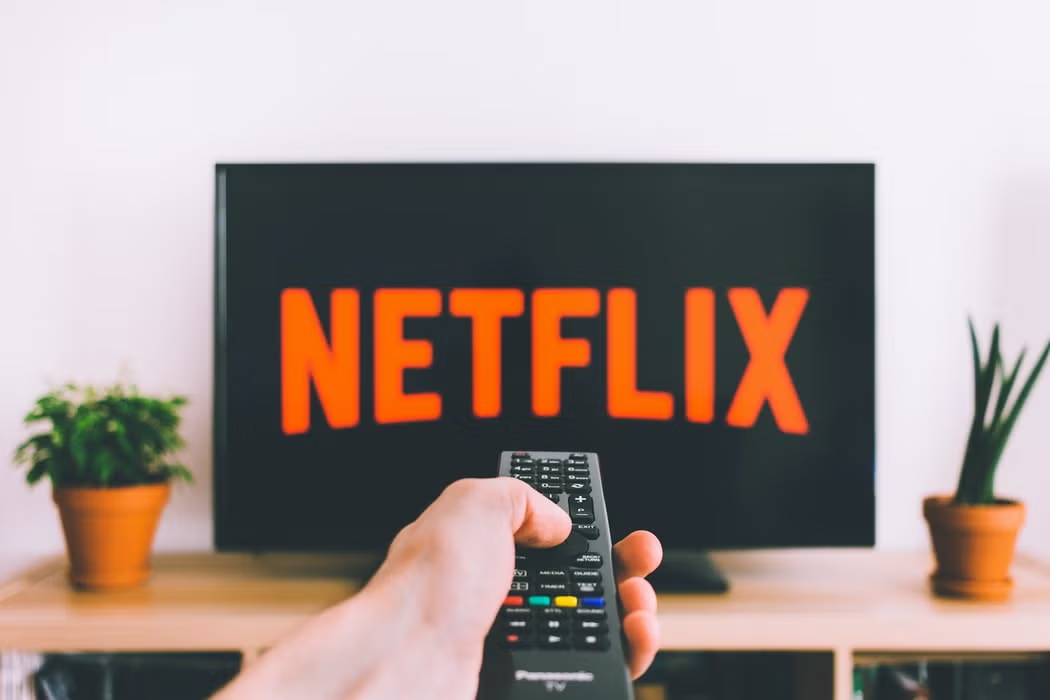Written by Shayna Korsh
When millions of people were forced to quarantine in their homes beginning in mid-March due to COVID-19, streaming services such as Netflix quickly catapulted into primary sources of entertainment. Since their creation in the early 2000s, Internet streaming services have revolutionized the film and television industry, as consumers are able to watch a seemingly endless amount of content all from the comforts of their own home. While most industries are facing financial hardship due to the pandemic and an economic recession, Internet streaming platforms have benefitted.
According to a Netflix corporate letter to its shareholders, the onset of the pandemic incited a wave of new subscribers to the platform. During the first three months of 2020, more than 15.7 million new users had signed up for the platform, a record number (Lee, 2020). This brought the total number of Netflix subscribers up to 182.8 million, making it “one of the world’s largest entertainment services” (Lee, 2020). Stock prices for the entertainment platform also increased drastically. While a share of Netflix stock amounted to 298.84 dollars on March 16th, that price rose to 439.17 dollars by April 16th, and it is continuing to rise (NASDAQ, 2020).
The secular shift to on-demand entertainment has not escaped competitors, as other media giants have unveiled streaming services of their own. In the last decade, several new competitors have emerged, most notably Hulu, Amazon Prime, and Disney+ (Barney, 2020). All of these platforms operate on a subscription basis, where users can pay a subscription fee either monthly or annually. Despite debuting in early November, Disney+ has already amassed nearly 50 million subscribers and has quickly become an Internet streaming giant (Lee, 2020).
While these platforms all serve a similar purpose of television streaming, each one utilizes unique content to attract consumer demand. For example, on July 3rd, Disney+ released a recording of Hamilton, the hit Broadway musical by Lin-Manuel Miranda (Rash, 2020). This resulted in a 74% jump in app downloads, “compared to the average of the previous four weekends in the U.S” (Rash, 2020). Similarly, Hulu subscribers are able to watch live sports and next day streaming from channels like ABC or Fox, a feature that is special to the app. Almost all streaming platforms also tend to release original productions. The only way to watch these original pieces of content is to subscribe to the platform–Netflix’s hit series Stranger Things is an example of this. In other words, the content does not premiere or run on live television, and this exclusively creates demand for the service.
Streaming television is a non-rival good. This means that the subscription to one platform does not prohibit consumers from subscribing to another. In fact, since the content on each platform is so unique, it is becoming more common for consumers to be subscribers to multiple platforms. In 2019, “46% of U.S. broadband households subscribe to two or more Internet TV services” (Lukovitz, 2019). Even though the data has not been published yet, it is extremely likely that the onset of the pandemic will have accelerated this trend. Customers subscribing to multiple services allows Internet streaming platforms to tap into the customer base of competing companies, inciting them to constantly update their content so customers have a reason to continue subscribing.
In addition to unique content, Internet streaming platforms are also using discounts as an incentive for consumers to subscribe. AT&T, for example, debuted its new streaming service, HBO Max, in late May. “A key reason behind AT&T’s $85 billion acquisition of Time Warner was to develop a new streaming service, partly to keep AT&T phone subscribers from defecting to rival operators. AT&T offers discounts on HBO Max to some of its phone customers” (Lee, 2020). AT&T understands that their new product is elastic, where lower prices will increase consumer demand. By offering these HBO Max discounts, AT&T is exploiting their product’s elasticity.
Before the pandemic, consumers were spending an increased amount of time streaming television, rather than watching it live. COVID-19 seems to be a catalyst for this trend. The 156.1 billion total minutes of usage on streaming platforms for the week of March 16th more than doubled that of the same week in 2019 (Barney, 2020). When live television was temporarily put on hold due to the virus, streaming services transformed into the primary substitute good. While the total television streaming time was especially high during the end of March, it was reasonably expected that these extremely high rates would wane as countries began to reopen in the late spring and early summer. However, according to another letter to its shareholders, Netflix broke its record for the number of new second-quarter subscribers at 10.1 million, compared to 2.7 million in 2019 (Barney, 2020). This may be the case because streaming television is an easier and cheaper option than going to a movie theatre. Even as the world eventually returns back to normal, the COVID-19 pandemic has ultimately accelerated a cultural shift from live television to one that prioritizes Internet streaming.
References
(19961998). NASDAQ stock market … fact book & company directory. Washington, DC: National Association of Securities Dealers.
Barney, C. (2020, April 7). Coronavirus: Streaming platforms see big surge during pandemic. The Mercury News. https://www.mercurynews.com/2020/04/07/coronavirus-streaming-platforms-see-big-surge-during-pandemic/.
Lee, E. (2020, April 21). Everyone You Know Just Signed Up for Netflix. https://www.nytimes.com/2020/04/21/business/media/netflix-q1-2020-earnings-nflx.html?login=email.
Lee, E. (2020, July 23). AT&T Signed Up 4 Million HBO Max Customers. The New York Times. https://www.nytimes.com/2020/07/23/business/media/att-hbo-max.html?searchResultPosition=6.
Lukovitz, K. (2019). 46% Of U.S. Broadband Households Now Subscribe To Multiple OTT Services. https://www.mediapost.com/publications/article/341547/46-of-us-broadband-households-now-subscribe-to.html.
Rash, J. (2020, July 10). OPINION EXCHANGE: Hamilton, and ‘Hamilton,’ reexamined anew. Star Tribune. https://www.startribune.com/hamilton-and-hamilton-reexamined-anew/571712102/
Rutnik, M. (2020, August 17). Hulu vs Netflix: Which one is right for you? Android Authority. https://www.androidauthority.com/hulu-vs-netflix-976070/.


